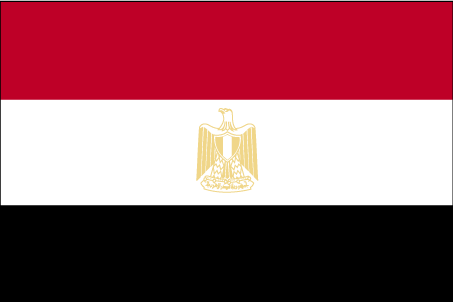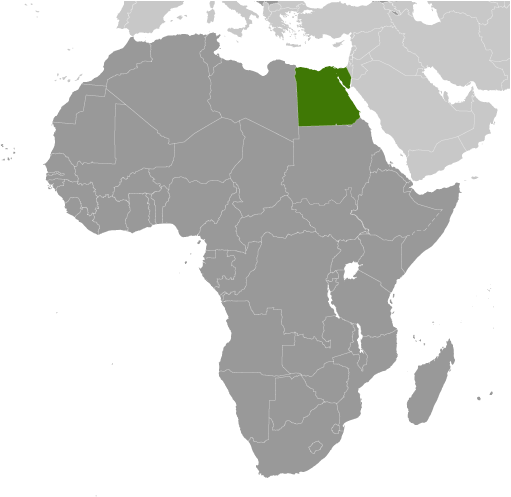
|
|
Advertisements:
EconomyEconomy - overview
Occupying the northeast corner of the African continent, Egypt is bisected by the highly fertile Nile valley, where most economic activity takes place. Egypt's economy was highly centralized during the rule of former President Gamal Abdel NASSER but opened up considerably under former Presidents Anwar EL-SADAT and Mohamed Hosni MUBARAK. Cairo from 2004 to 2008 aggressively pursued economic reforms to attract foreign investment and facilitate GDP growth. Despite the relatively high levels of economic growth in recent years, living conditions for the average Egyptian remained poor and contributed to public discontent. After unrest erupted in January 2011, the Egyptian Government drastically increased social spending to address public dissatisfaction, but political uncertainty at the same time caused economic growth to slow significantly, reducing the government's revenues. Tourism, manufacturing, and construction are among the hardest hit sectors of the Egyptian economy, and economic growth is likely to remain slow at least through 2012. The government is utilizing foreign exchange reserves to support the Egyptian pound and Egypt may seek a loan from the International Monetary Fund. Gdp (purchasing power parity) World Ranking: 27
$525.6 billion (2011 est.)
$516.5 billion (2010 est.) $491.2 billion (2009 est.) Note Data are in 2011 US dollars Gdp (official exchange rate)
$235.7 billion (2011 est.)
Gdp - real growth rate World Ranking: 155
1.8% (2011 est.)
5.1% (2010 est.) 4.7% (2009 est.) Gdp - per capita (ppp) World Ranking: 136
$6,600 (2011 est.)
$6,600 (2010 est.) $6,400 (2009 est.) Note Data are in 2011 US dollars Gdp - composition by sector
Agriculture 14.5%
Industry 37.6% Services 47.6% (2011 est.) Labor force World Ranking: 22
27.74 million (2011 est.)
Labor force - by occupation
Agriculture 32%
Industry 17% Services 51% (2001 est.) Unemployment rate World Ranking: 128
12.2% (2011 est.)
9% (2010 est.) Population below poverty line
20% (2005 est.)
Household income or consumption by percentage share
Lowest 10% 3.9%
Highest 10% 27.6% (2005) Distribution of family income - gini index World Ranking: 89
34.4 (2001)
Investment (gross fixed) World Ranking: 135
14.8% of GDP (2011 est.)
Budget
Revenues $44.69 billion
Expenditures $67.7 billion (2011 est.) Taxes and other revenues World Ranking: 172
19% of GDP (2011 est.)
Budget surplus (+) or deficit (-) World Ranking: 195
-9.8% of GDP (2011 est.)
Public debt World Ranking: 21
83.4% of GDP (2011 est.)
81.4% of GDP (2010 est.) Note Data cover central government debt, and includes debt instruments issued (or owned) by government entities other than the treasury; the data include treasury debt held by foreign entities; the data include debt issued by subnational entities, as well as intra-governmental debt; intra-governmental debt consists of treasury borrowings from surpluses in the social funds, such as for retirement, medical care, and unemployment; debt instruments for the social funds are sold at public auctions Inflation rate (consumer prices) World Ranking: 192
10.2% (2011 est.)
11.1% (2010 est.) Central bank discount rate World Ranking: 36
8.68% (31 December 2010 est.)
8.5% (31 December 2009 est.) Commercial bank prime lending rate World Ranking: 77
11.03% (31 December 2011 est.)
11.008% (31 December 2010 est.) Stock of narrow money World Ranking: 47
$49.27 billion (31 December 2011 est.) $38.5 billion (31 December 2010 est.) Stock of broad money World Ranking: 44
$172.7 billion (31 December 2011 est.) $168.3 billion (31 December 2010 est.) Stock of domestic credit World Ranking: 46
$137.5 billion (31 December 2011 est.) $141.6 billion (31 December 2010 est.) Market value of publicly traded shares World Ranking: 45
$48.68 billion (31 December 2011) $82.49 billion (31 December 2010) $89.95 billion (31 December 2009) Agriculture - products
Cotton, rice, corn, wheat, beans, fruits, vegetables; cattle, water buffalo, sheep, goats Industries
Textiles, food processing, tourism, chemicals, pharmaceuticals, hydrocarbons, construction, cement, metals, light manufactures Industrial production growth rate World Ranking: 143
0.5% (2011 est.)
Electricity - production World Ranking: 27
123.9 billion kWh (2008 est.)
Electricity - consumption World Ranking: 29
109.1 billion kWh (2008 est.)
Electricity - exports
1.022 billion kWh (2008 est.)
Electricity - imports
896 million kWh (2008 est.)
Oil - production World Ranking: 29
662,600 bbl/day (2010 est.)
Oil - consumption World Ranking: 25
740,000 bbl/day (2010 est.)
Oil - exports World Ranking: 57
163,000 bbl/day (2009 est.)
Oil - imports World Ranking: 52
177,200 bbl/day (2009 est.)
Oil - proved reserves World Ranking: 27
4.4 billion bbl (1 January 2011 est.) Natural gas - production World Ranking: 14
62.69 billion cu m (2009 est.)
Natural gas - consumption World Ranking: 18
44.37 billion cu m (2009 est.)
Natural gas - exports World Ranking: 13
18.32 billion cu m (2009 est.)
Natural gas - imports World Ranking: 184
0 cu m (2009 est.)
Natural gas - proved reserves World Ranking: 17
2.186 trillion cu m (1 January 2011 est.) Current account balance World Ranking: 168
-$5.422 billion (2011 est.)
-$5.596 billion (2010 est.) Exports World Ranking: 68
$27.91 billion (2011 est.)
$25.02 billion (2010 est.) Exports - commodities
Crude oil and petroleum products, cotton, textiles, metal products, chemicals, processed food Exports - partners
Italy 8.8%, Germany 5.5%, US 5.5%, India 5.2%, Saudi Arabia 5.1%, Spain 4.7%, France 4.5% (2011) Imports World Ranking: 52
$53.97 billion (2011 est.)
$52.7 billion (2010 est.) Imports - commodities
Machinery and equipment, foodstuffs, chemicals, wood products, fuels Imports - partners
China 11.5%, US 9.8%, Italy 5.6%, Germany 4.9%, Turkey 4.4%, Brazil 4.1% (2011) Reserves of foreign exchange and gold World Ranking: 61
$17.66 billion (31 December 2011 est.) $35.79 billion (31 December 2010 est.) Debt - external World Ranking: 67
$33.74 billion (31 December 2011 est.) $34.84 billion (31 December 2010 est.) Stock of direct foreign investment - at home World Ranking: 46
$72.61 billion (31 December 2011 est.) $73.1 billion (31 December 2010 est.) Stock of direct foreign investment - abroad World Ranking: 60
$6.073 billion (31 December 2011 est.) $5.447 billion (31 December 2010 est.) Exchange rates
Egyptian pounds (EGP) per US dollar - 5.9328 (2011 est.)5.6219 (2010 est.) 5.545 (2009) 5.4 (2008) 5.67 (2007) Fiscal year
1 July - 30 June
Comments
Add a new comment: |
Advertisement
Members area
Egypt (Cairo):
 
GPS points from Egypt (Cairo)
|
||||||||

 The regularity and richness of the annual Nile River flood, coupled with semi-isolation provided by deserts to the east and west, allowed for the development of one of the world's great civilizations. A unified kingdom arose circa 3200 B.C., and a series of dynasties ruled in Egypt for the next three millennia. The last native dynasty fell to the Persians in 341 B.C., who in turn were replaced by the Greeks, Romans, and Byzantines. It was the Arabs who introduced Islam and the Arabic language in the 7th century and who ruled for the next six centuries. A local military caste, the Mamluks took control about 1250 and continued to govern after the conquest of Egypt by the Ottoman Turks in 1517. Following the completion of the Suez Canal in 1869, Egypt became an important world transportation hub, but also fell heavily into debt. Ostensibly to protect its investments, Britain seized control of Egypt's government in 1882, but nominal allegiance to the Ottoman Empire continued until 1914. Partially independent from the UK in 1922, Egypt acquired full sovereignty with the overthrow of the British-backed monarchy in 1952. The completion of the Aswan High Dam in 1971 and the resultant Lake Nasser have altered the time-honored place of the Nile River in the agriculture and ecology of Egypt. A rapidly growing population (the largest in the Arab world), limited arable land, and dependence on the Nile all continue to overtax resources and stress society. The government has struggled to meet the demands of Egypt's growing population through economic reform and massive investment in communications and physical infrastructure. Egyptian youth and opposition groups, inspired by events in Tunisia leading to overthrow of the government there, organized a "Day of Rage" campaign on 25 January 2011 (Police Day) to include non-violent demonstrations, marches, and labor strikes in Cairo and other cities throughout Egypt. Protester grievances focused on police brutality, state emergency laws, lack of free speech and elections, high unemployment, rising food prices, inflation, and low minimum wages. Within several days of the onset of protests, President MUBARAK addressed the nation pledging the formation of a new government, and in a second address he offered additional concessions, which failed to assuage protesters and resulted in an escalation of the number and intensity of demonstrations and clashes with police. On 11 February MUBARAK resigned and national leadership was assumed by a Supreme Council of Armed Forces (SCAF). The SCAF dissolved the Egyptian parliament, suspended the nation's constitution, and formed a committee to recommend constitutional changes to facilitate a political transition through democratic elections. Following some delays, elections for a new parliament took place between November 2011 and January 2012. Presidential elections held in May and June witnessed the victory of Muslim Brotherhood candidate Mohammed MURSI over former Prime Minister Ahmed SHAFIQ.
The regularity and richness of the annual Nile River flood, coupled with semi-isolation provided by deserts to the east and west, allowed for the development of one of the world's great civilizations. A unified kingdom arose circa 3200 B.C., and a series of dynasties ruled in Egypt for the next three millennia. The last native dynasty fell to the Persians in 341 B.C., who in turn were replaced by the Greeks, Romans, and Byzantines. It was the Arabs who introduced Islam and the Arabic language in the 7th century and who ruled for the next six centuries. A local military caste, the Mamluks took control about 1250 and continued to govern after the conquest of Egypt by the Ottoman Turks in 1517. Following the completion of the Suez Canal in 1869, Egypt became an important world transportation hub, but also fell heavily into debt. Ostensibly to protect its investments, Britain seized control of Egypt's government in 1882, but nominal allegiance to the Ottoman Empire continued until 1914. Partially independent from the UK in 1922, Egypt acquired full sovereignty with the overthrow of the British-backed monarchy in 1952. The completion of the Aswan High Dam in 1971 and the resultant Lake Nasser have altered the time-honored place of the Nile River in the agriculture and ecology of Egypt. A rapidly growing population (the largest in the Arab world), limited arable land, and dependence on the Nile all continue to overtax resources and stress society. The government has struggled to meet the demands of Egypt's growing population through economic reform and massive investment in communications and physical infrastructure. Egyptian youth and opposition groups, inspired by events in Tunisia leading to overthrow of the government there, organized a "Day of Rage" campaign on 25 January 2011 (Police Day) to include non-violent demonstrations, marches, and labor strikes in Cairo and other cities throughout Egypt. Protester grievances focused on police brutality, state emergency laws, lack of free speech and elections, high unemployment, rising food prices, inflation, and low minimum wages. Within several days of the onset of protests, President MUBARAK addressed the nation pledging the formation of a new government, and in a second address he offered additional concessions, which failed to assuage protesters and resulted in an escalation of the number and intensity of demonstrations and clashes with police. On 11 February MUBARAK resigned and national leadership was assumed by a Supreme Council of Armed Forces (SCAF). The SCAF dissolved the Egyptian parliament, suspended the nation's constitution, and formed a committee to recommend constitutional changes to facilitate a political transition through democratic elections. Following some delays, elections for a new parliament took place between November 2011 and January 2012. Presidential elections held in May and June witnessed the victory of Muslim Brotherhood candidate Mohammed MURSI over former Prime Minister Ahmed SHAFIQ.